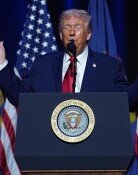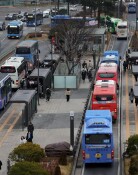Physical Exercise at School
Parents who send their children to elementary, middle and high schools in the U.S., Japan and Europe might have been surprised over afterschool physical education programs at such schools. All private schools with dormitories in the three regions have such programs. Most of the schools are equipped with gyms and swimming pools. Students attending public schools play sports such as soccer and baseball at neighborhood parks after school. The term soccer mom describes women who are enthusiastically support their childrens participation in the sport. Bill Clinton was elected U.S. president in 1996 by targeting soccer moms. Incumbent U.S. President Barack Obama and his wife often watch their daughters play competitive soccer.
In stark contrast, Korean teenagers are so busy studying after school and getting private tutoring that they even lack sufficient sleep. Their physical strength is declining since they have little time for physical activity after school and class hours for physical education have been cut. The share of middle and high school students who received the lowest grades of five and four in the national physical ability test increased from 31 percent in 2000 to 53.2 percent last year. The proportion of students who follow a guideline recommending exercise for an hour a day more than five days a week is just 13.3 percent.
Physical activity not only enhances physical strength and nurtures cooperation and a sense of community, but also develops brain power by supplying blood and oxygen to the brain. John J. Ratey, a psychiatry professor at Harvard Medical School and an authority on neurology, proved that exercise develops learning ability and treats depression. Physical education at school should be actively promoted since it promotes physical activity for all people.
The Korean government seeks to increase the share of students who join school sports clubs from 27.4 percent last year to 50 percent in 2015, and that of students who follow physical activity guidelines will be raised from 13.4 percent to 30 percent over the same period. Education Minister Lee Joo-ho said, Well encourage students to enjoy a diversity of sports activities as those in Britains Eton School do. The ministry also plans to reflect sports club activities in the assessment for college entrance. The last thing the government should do, however, is to add another item to college entrance assessment without increasing physical activity in school.
Editorial Writer Kwon Soon-taek (maypole@donga.com)







